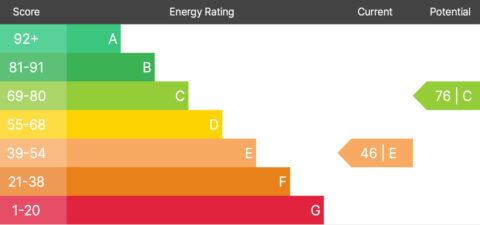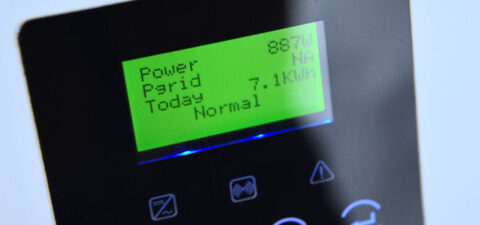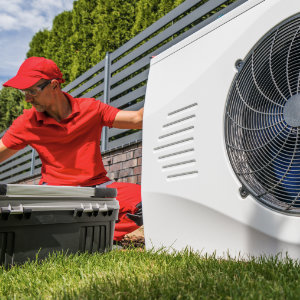Pure battery powered electric cars are exempt from Vehicle Excise Duty (VED). The rules state “the electricity must come from an external source or an electric storage battery not connected to any source of power when the vehicle is moving”.
Extended-range Hybrids, Plug in Hybrids and Petrol / Diesel Hybrids vehicle tax is based on their CO2 emission. You can use our Car Running Costs database to see the cost of taxing thousands of cars.
Tax bands for cars registered between 1 March 2001 and 31 March 2017
Petrol car (TC48) and diesel car (TC49)
| Band and CO2 emission | Single 12 month payment | Single 12 month payment by Direct Debit | Total of 12 monthly instalments by Direct Debit | Single 6 month payment | Single 6 month payment by Direct Debit |
|---|---|---|---|---|---|
| A: Up to 100g/km | £0 | £0 | N/A | N/A | N/A |
| B: 101 to 110g/km | £20 | £20 | £21 | N/A | N/A |
| C: 111 to 120g/km | £35 | £35 | £36.75 | N/A | N/A |
| D: 121 to 130g/km | £150 | £150 | £157.50 | £82.50 | £78.75 |
| E: 131 to 140g/km | £180 | £180 | £189 | £99 | £94.50 |
| F: 141 to 150g/km | £200 | £200 | £210 | £110 | £105 |
| G: 151 to 165g/km | £240 | £240 | £252 | £132 | £126 |
| H: 166 to 175g/km | £290 | £290 | £304.50 | £159.50 | £152.25 |
| I: 176 to 185g/km | £320 | £320 | £336 | £176 | £168 |
| J: 186 to 200g/km | £365 | £365 | £383.25 | £200.75 | £191.63 |
| K*: 201 to 225g/km | £395 | £395 | £414.75 | £217.25 | £207.38 |
| L: 226 to 255g/km | £675 | £675 | £708.75 | £371.25 | £354.38 |
| M: Over 255g/km | £695 | £695 | £729.75 | £382.25 | £364.88 |
*Includes cars with a CO2 figure over 225g/km but were registered before 23 March 2006.
Alternative fuel car (TC59)
| Band and CO2 emission | Single 12 month payment | Single 12 month payment by Direct Debit | Total of 12 monthly instalments by Direct Debit | Single 6 month payment | Single 6 month payment by Direct Debit |
|---|---|---|---|---|---|
| A: Up to 100g/km | £0 | N/A | N/A | N/A | N/A |
| B: 101 to 110g/km | £10 | £10 | £10.50 | N/A | N/A |
| C: 111 to 120g/km | £25 | £25 | £26.25 | N/A | N/A |
| D: 121 to 130g/km | £140 | £140 | £147 | £77 | £73.50 |
| E: 131 to 140g/km | £170 | £170 | £178.50 | £93.50 | £89.25 |
| F: 141 to 150g/km | £190 | £190 | £199.50 | £104.50 | £99.75 |
| G: 151 to 165g/km | £230 | £230 | £241.50 | £126.50 | £120.75 |
| H: 166 to 175g/km | £280 | £280 | £294 | £154 | £147 |
| I: 176 to 185g/km | £310 | £310 | £325.50 | £170.50 | £162.75 |
| J: 186 to 200g/km | £355 | £355 | £372.75 | £195.25 | £186.38 |
| K*: 201 to 225g/km | £385 | £385 | £404.25 | £211.75 | £202.13 |
| L: 226 to 255g/km | £665 | £665 | £698.25 | £365.75 | £349.13 |
| M: Over 255g/km | £685 | £685 | £719.25 | £376.75 | £359.63 |
*Includes cars with a CO2 figure over 225g/km but were registered before 23 March 2006.
First tax payment for cars registered from 1 April 2017
| CO2 emissions | Diesel cars (TC49) that meet the RDE2 standard and petrol cars (TC48) | All other diesel cars (TC49) | Alternative fuel cars (TC59) |
|---|---|---|---|
| 0g/km | £0 | £0 | £0 |
| 1 to 50g/km | £10 | £30 | £0 |
| 51 to 75g/km | £30 | £130 | £20 |
| 76 to 90g/km | £130 | £165 | £120 |
| 91 to 100g/km | £165 | £185 | £155 |
| 101 to 110g/km | £185 | £210 | £175 |
| 111 to 130g/km | £210 | £255 | £200 |
| 131 to 150g/km | £255 | £645 | £245 |
| 151 to 170g/km | £645 | £1,040 | £635 |
| 171 to 190g/km | £1,040 | £1,565 | £1,030 |
| 191 to 225g/km | £1,565 | £2,220 | £1,555 |
| 226 to 255g/km | £2,220 | £2,605 | £2,210 |
| Over 255g/km | £2,605 | £2,605 | £2,595 |
Rates for second tax payment onwards
| Fuel type | Single 12 month payment | Single 12 month payment by Direct Debit | Total of 12 monthly payments by Direct Debit | Single 6 month payment | Single 6 month payment by Direct Debit |
|---|---|---|---|---|---|
| Petrol or diesel | £180 | £180 | £189 | £99 | £94.50 |
| Electric | £0 | N/A | N/A | £0 | N/A |
| Alternative | £170 | £170 | £178.50 | £93.50 | £89.25 |









